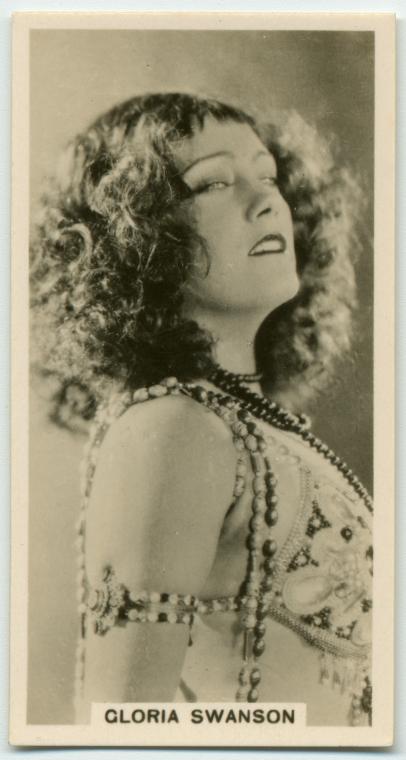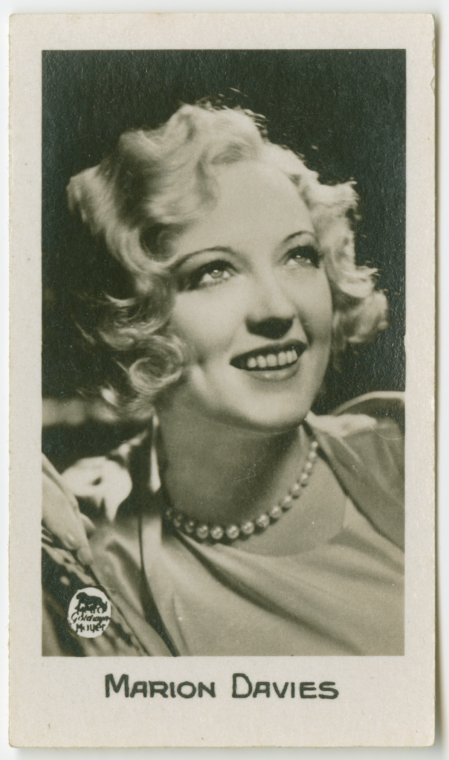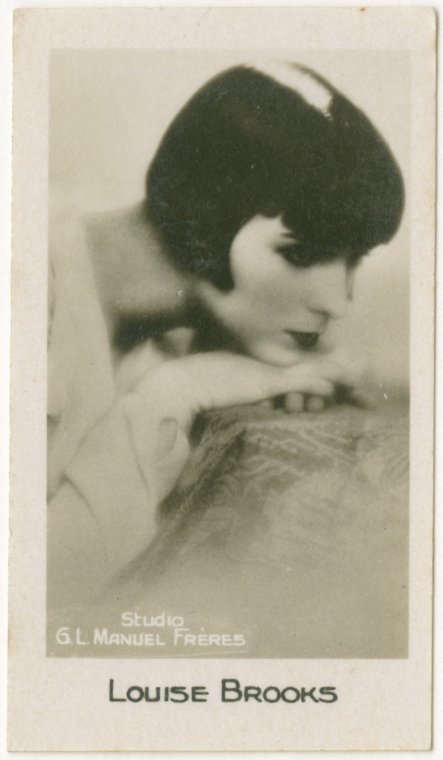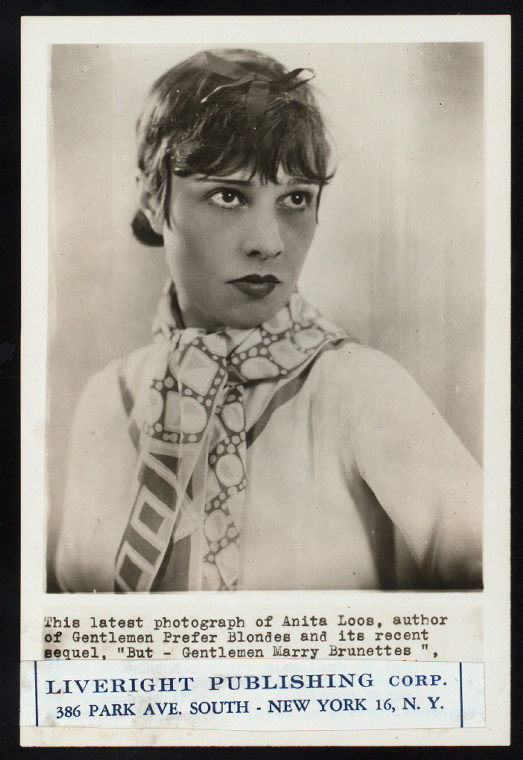Biblio File, 24 Frames per Second
The Times We Had: Old Hollywood Memoirs
 Hollywood, 1923, Library of Congress PAN US GEOG - California no. 272
Hollywood, 1923, Library of Congress PAN US GEOG - California no. 272
In the late 1800s Harvey Wilcox and his wife Daeida purchased 160 acres in the rolling California hills for a housing subdivision. They called it Hollywood. In 1911 the first filmmakers arrived from New Jersey; in Hollywood they could shoot outdoors without electrical lighting for over 100 days each year. Others from the east coast soon followed, coming not only for the sunny climate but to escape the clutches of the Motion Pictures Patents Company, or the Edison Trust, which licensed Thomas Edison's patents and often violently enforced their monopoly on cameras, projection equipment, and film distribution. By the time the Trust was successfully prosecuted and dissolved under the Sherman act in 1918, Hollywood — the future film capital of the world — was already up and running.
The foundation of the Hollywood studio system was laid during the second decade of the 20th Century. Nestor Motion Picture Company built the first studio on Sunset and Gower in 1911, merging in 1912 with Universal Studios. The same year Mack Sennett opened the Keystone Film Company. The first World War (1914-1918) put an end to European film dominance, allowing Hollywood filmmakers to work without much competition (and to make a lot of money promoting the war), and their output was prodigious. In 1914 brothers-in-law Samuel Goldwyn and Jesse Lasky founded the Jesse L. Lasky Feature Play Company. A year later in 1915 William Fox founded the Fox Film Foundation. Paramount began in 1916 when Jesse L. Lasky Co. merged with Adolph Zukor's Famous Players Film Co. In 1917 Famous Players-Lasky absorbed Occidental Studios, and the Charlie Chaplin Studios opened on the corner of La Brea and Sunset. Warner Brothers was founded in 1918 by four brothers, former soap salesmen from Ohio. In 1919 Charlie Chaplin, D.W. Griffith, Douglas Fairbanks and Mary Pickford founded United Artists, an independent film studio.
This was the beginning of
Here are a few of the best Old Hollywood memoirs. Although they were written decades after the events they describe had passed, each is a powerful evocation of those remarkable times.

Charlie Chaplin was born in the slums of West London in 1889. His parents, who enjoyed some success as vaudeville and music hall entertainers, were absent for much of Charlie's childhood. His father was an alcoholic who abandoned Charlie and his brother Sidney when Charlie was 3 years old; his mother spent her adult life in and out of mental asylums. From a childhood of abject poverty, Charlie Chaplin rose to become the most beloved comedian, producer, director, and composer of his time. His best known films include The Kid (1921), The Gold Rush (1925), City Lights (1931), Modern Times (1936), and The Great Dictator (1940). In 1952, he became one of the many victims of McCarthyism, accused of "un-American activities", and was not allowed to enter the United States after returning from a trip abroad. He left the US and settled in Vevey, Switzerland, working on this memoir from 1959 to 1963. He returned to the States in 1972 to accept an honorary Oscar, a happy ending he couldn't have imagined when My Autobiography was published in 1964. He was knighted by Queen Elizabeth II in 1975.

Swanson on Swanson, by Gloria Swanson
Gloria Swanson was born Gloria Svensson in Chicago in 1897. At 16 she was hired as an extra at Chicago's Essanay Studios where she met her first husband, the actor Wallace Beery; she joined him in Hollywood in 1916 and signed with Mack Sennett's Keystone Company. After a series of romantic comedies and melodramas, she found work with Artcraft Paramount Studios, then teamed up with Cecil B. Demille and quickly rose to stardom. By the mid-1920s, she was the reigning Queen of Hollywood, starring in such films as Beyond the Rocks (1922) with Rudolph Valentino, and The Affairs of Anatol (1921). In 1925 Gloria went to France to film Madame Sans Gene; she met her second husband the Marquis Henri Le Bailly de la Falaise there, becoming the first (but not the last) Hollywood star to attain royal status. Two years later she an affair with Joseph P. Kennedy; their financial partnership gave her the freedom to produce her own films for United Artists. She retired from the screen in 1934, appearing in only five more films over the decades. She received her third Best Actress Oscar nomination for Sunset Boulevard in 1950. Gloria Swanson was one of the first celebrities to publicly endorse Vegetarianism. Swanson on Swanson was published in 1981.

Marion Davies was born Marion Cecilia Douras in Brooklyn, New York in 1897. In 1916 she joined the Ziegfeld Follies, and made her screen debut that same year in a fashion newsreel. She wrote her first feature film, Runaway Romany (1917), herself; it was directed by her brother-in-law, Broadway producer George W. Lederer. In 1918 she starred in Cecilia of the Pink Roses, the first film backed by William Randolph Hearst. By the mid-1920s, her career was overshadowed by her relationship with the married Hearst and their extravagant social life at San Simeon and Ocean House in Santa Monica. Although Hearst preferred to see Marion in serious roles and costume dramas, Marion always saw herself as a comedic actress. Cosmopolitan, Hearst's production company, distributed films first through Paramount (1919-23), then Goldwyn (1924-25), then MGM (1925-34) and finally Warner Brothers (1935-37). When Cosmopolitan Pictures folded in 1937, Marion retired from films and retreated to San Simeon to devote herself to being Hearst's companion. The Times We Had was recorded after Hearst's death in 1951.

Louise Brooks was born in Cherryvale, Kansas in 1906. Her career began in 1922, with the Denishawn Dancers. After being fired by Ruth St. Denis two years later, she found work as a chorus girl in George White's Scandals, then appeared as a featured dancer in the 1925 edition of the Ziegfeld Follies on Broadway. That same year, producer Walter Wanger signed her to a five year contract at Paramount Pictures, where she worked with directors Malcom St. Clair, Eddie Sutherland, William Wellman and Howard Hawks, making such wildly popular films as It's the Old Army Game (1926) with W.C. Fields, Love 'Em & Leave 'Em (1926) with Evelyn Brent, Beggars of Life (1928) with Wallace Beery and Richard Arlen, and The Canary Murder Case (1929) with William Powell and Jean Arthur. Louise loathed Hollywood, and in an act of defiance, quit Paramount after the studio denied her a raise. She left for Germany to star in G.W. Pabst's Pandora's Box (1929), a film considered by many to be a landmark of silent cinema. She did two more films in Europe, Diary of a Lost Girl (1929), again with Pabst, and Prix de Beauté (1930), an early French sound film based on a story by Pabst & Rene Clair. After returning to Hollywood, she found herself to be essentially blacklisted. She spent many years in obscurity in New York before she was approached by James Card, the film curator for the George Eastman House, who persuaded her to move to Rochester, New York to be near the George Eastman House film collection. While living in Rochester she became a noted film writer. Lulu in Hollywood, a collection of sharp and articulate essays, was published in 1982.
For the definitive biography, check out Louise Brooks, by Barry Paris. A great website for everything Lulu is pandorasbox.com.

A Girl Like I, by Anita Loos
Anita Loos, playwright, screenwriter, novelist, memoirist, was born in 1888 in Sisson (Mount Shasta), California. Anita knew that she wanted to be a writer by the time she was 6 years old. Her literary career took off in 1912; over the next three years she submitted 105 screenplays to the Biograph and Lubin studios, all but four of which were produced. In 1915 she became the first official staff writer in Hollywood, at Triangle Motion Picture Company. Her collaboration with Douglas Fairbanks on five of his early films made him a star, and when he moved to Famous Players-Lasky, he took her with him. In 1932 she signed with MGM; San Francisco was nominated for a Best Original Screenplay Oscar in 1936. Many of her scripts were made into films by such great directors as D. W. Griffith and George Cukor; San Francisco (1936), The Women (1939), and Red-Headed Woman (1932) are three of her best-known. The list of stars for whom she created unforgettable roles includes Mary Pickford, Marion Davies, Constance Talmadge, Jean Harlow, Clark Gable, Joan Crawford, Norma Shearer, and Carol Channing. Her most famous novel, Gentlemen Prefer Blondes, was published in 1925. In 1951 Anita collaborated with Colette on the the Broadway adaptation of Gigi, which launched Audrey Hepburn’s career. A regular contributor to Vanity Fair magazine since 1917, Anita's writing appeared regularly for many decades in Harper's Bazaar and The New Yorker. In 1966 her first volume of memoirs, A Girl Like I, was published. Kiss Hollywood Goodbye was published in 1974, and Cast of Thousands in 1976.
If you enjoyed this post, be sure to visit the Library for the Performing Arts in time for "The Birth of Promotion: Inventing Film Publicity in the Silent-Film Era," running through February 25.
Read E-Books with SimplyE
 With your library card, it's easier than ever to choose from more than 300,000 e-books on SimplyE, The New York Public Library's free e-reader app. Gain access to digital resources for all ages, including e-books, audiobooks, databases, and more.
With your library card, it's easier than ever to choose from more than 300,000 e-books on SimplyE, The New York Public Library's free e-reader app. Gain access to digital resources for all ages, including e-books, audiobooks, databases, and more.
If you don’t have an NYPL library card, New York State residents can apply for a digital card online or through SimplyE (available on the App Store or Google Play).
Need more help? Read our guide to using SimplyE.